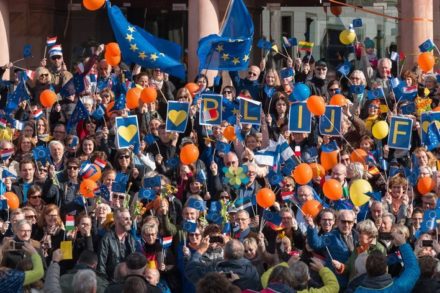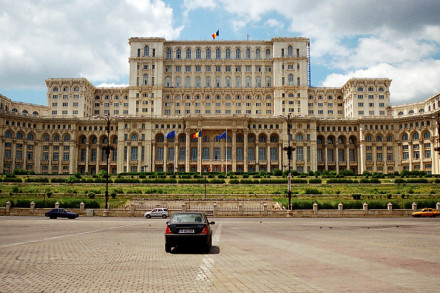by Valentin Steinhauer
In the early 1950s, humanity entered the era of space exploration. An era, which at the time, was predominately defined by geopolitical rivalry. The space race between the Soviet Union on the one hand and the United States on the other hand eventually culminated in the first moon landing in July, 1969. In retrospect, Neil Armstrong’s famous first step on the moon’s surface marked the glorious accomplishment of a political goal which was set out by John F. Kennedy eight years before.
After this milestone of space exploration, only five more missions were launched to bring men onto the moon, with the Apollo programme being shut down in 1972. While over the years, much progress had been made, most notably a move away from international competition to co-operation exemplified by the construction of the International Space Station (ISS), the idea of re-visiting the moon has somewhat sunk into oblivion.
On the 7th of January 2016, in a move made all the more surprising by its striking analogy to Disney’s latest Blockbuster, the European Space Agency (ESA) announced a return to the moon by the early 2020s with a short video called ‘The Moon Awakens’. Yet while Disney’s Hollywood marketing campaign made sure that even the greatest sci-fi skeptics amongst us learned about the return of Skywalker and co., ESA’s announcement was barely noticed by the wider public.
Despite low public awareness of ESA’s enterprise, ‘The Moon Awakens’ represents a bold step to re-define Europe’s place in space. In particular, it marks a gradual move of focus, away from its traditionally closer partner on the other side of the Atlantic (NASA currently concentrates on the exploration of Mars), to join forces with China and Russia. Together, they aim to launch lunar missions, which will ultimately culminate in the construction of a moon village in the years ahead. In this village, human astronauts, supported by robots, will explore the so far undiscovered landscapes of the moon. Moreover, the moon station can serve as a springboard for human space flight to other planets, most notably Mars.
For the sake of better understanding, let us take one step back and reconsider what we actually mean by Europe’s role in space. The ESA is the central governing body of European space agencies and combines 22 Member States. Founded in 1975, the ESA largely remains an intergovernmental institution with close ties to the European Union. Since the entry into force of the Lisbon Treaty (2009), space policy officially became a so-called ‘shared competence’ of the Union, endowing Brussels with the power to legislate in the field. Today, the EU constitutes the single largest contributor to ESA funds and relations between the two organisations are regulated by a Framework Agreement.
Together, both organisations successfully launched a couple of missions which help to tackle environmental challenges, stimulate technological innovation, and guarantee Europe’s access to space. To illustrate what Europe is practically doing in space today, consider the following examples:
- Under the Copernicus programme, the EU is able to receive critical data on climate change from earth observation.
- On December 17, 2015, Galileo satellites 11 and 12 were successfully launched into the orbit, contributing to provide Europe with its own global satellite navigation system, reducing dependence on the globally used, but US owned, GPS system.
- The Rosetta mission allows to perform a detailed study of comets, representing the first spacecraft ever to orbit a comet while landing a probe on its surface.
The manifold projects carried out by ESA in cooperation with the EU bear witness to Europe’s ambitions. The European Commission considers space exploration to be a ‘sector of strategic political importance for the EU’. In this context, ‘The Moon Awakens’ represents but the latest stage of Europe’s endeavour to find its place in space. In dark times of increasing Euroscepticism and political crisis, European space policy appears to be an often overlooked yet shining example of successful European co-operation – floating over us like a gleaming star in a galaxy far, far away…
Image by Harald Henkel, taken from flickr




